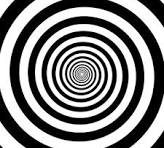Unveiling the Enigmatic World of Circle Illusions
The Fascinating World of Circle Illusions
Circle illusions are a captivating form of optical trickery that play with our perception and challenge our understanding of shapes and dimensions. These mesmerising visual phenomena have intrigued artists, scientists, and curious minds for centuries.
How Circle Illusions Work
One of the most common types of circle illusions is the famous “Ehrenstein illusion,” where concentric circles appear to be distorted or uneven due to the placement of surrounding shapes or lines. This distortion tricks our brains into perceiving the circles as non-circular, creating a mesmerising effect.
The Psychology Behind Circle Illusions
Circle illusions demonstrate how easily our brains can be deceived by visual stimuli. Our perception is influenced by factors such as contrast, colour, and context, leading us to interpret shapes in ways that may not align with reality. Studying circle illusions helps researchers better understand how the brain processes visual information.
Applications of Circle Illusions
Circle illusions are not just fascinating to look at; they also have practical applications in various fields. Artists use these illusions to create dynamic and engaging artwork, while designers incorporate them into advertisements and packaging to grab viewers’ attention. Additionally, researchers use circle illusions in cognitive studies to explore human perception and cognition.
Experience the Magic Yourself
Ready to explore the enchanting world of circle illusions? Take a moment to immerse yourself in these captivating visuals and discover the power of optical illusions to challenge your senses and spark your imagination.
Whether you’re a casual observer or a dedicated enthusiast, circle illusions offer a delightful journey into the realm of visual wonder. Embrace the magic, expand your perception, and marvel at the beauty of these intricate optical creations.
Exploring the Fascinating World of Circle Illusions: Five Compelling Benefits
- Circle illusions are visually captivating and can grab the viewer’s attention instantly.
- They challenge the brain’s perception of shapes and dimensions, stimulating cognitive processes.
- Circle illusions are versatile and can be used in various art forms, designs, and visual presentations.
- Exploring circle illusions can be a fun and engaging way to experience the magic of optical tricks.
- Studying circle illusions provides insights into human cognition and how our brains interpret visual information.
Potential Drawbacks of Circle Illusions: Discomfort, Confusion, and Health Considerations
- Circle illusions can cause visual discomfort or dizziness in some individuals.
- Some people may find circle illusions confusing or disorienting.
- Certain circle illusions may not be suitable for individuals with certain medical conditions, such as epilepsy.
- Excessive exposure to circle illusions could potentially strain the eyes and lead to fatigue.
- Interpreting complex circle illusions accurately may require a high level of concentration and focus.
Circle illusions are visually captivating and can grab the viewer’s attention instantly.
Circle illusions possess a unique ability to captivate viewers with their visually striking effects, effortlessly drawing attention and sparking intrigue. The mesmerising nature of circle illusions lies in their power to instantly engage the observer, inviting them to explore the intricacies of the optical deception at play. Whether through dynamic movement or intricate patterns, these illusions have a magnetic quality that commands immediate focus and admiration, making them a powerful tool for capturing and holding the viewer’s attention in a world filled with visual stimuli.
They challenge the brain’s perception of shapes and dimensions, stimulating cognitive processes.
Circle illusions present a fascinating pro by challenging the brain’s perception of shapes and dimensions, thus stimulating cognitive processes. By distorting the appearance of circles through clever visual tricks, these illusions prompt the brain to question and reevaluate what it sees. This cognitive engagement not only enhances our understanding of how we perceive the world around us but also encourages critical thinking and problem-solving skills. Circle illusions serve as a captivating tool for exercising the mind and exploring the complexities of visual perception.
Circle illusions are versatile and can be used in various art forms, designs, and visual presentations.
Circle illusions offer a versatile advantage in the realm of visual creativity, as they can be seamlessly integrated into various art forms, designs, and visual presentations. Whether employed in intricate paintings, modern graphic designs, or captivating multimedia displays, circle illusions have the power to enhance aesthetic appeal and engage viewers on multiple levels. Their adaptability allows artists and designers to experiment with different styles and mediums, creating dynamic compositions that captivate audiences and evoke a sense of wonder and intrigue. The versatility of circle illusions opens up endless possibilities for innovative expression and imaginative storytelling across diverse creative disciplines.
Exploring circle illusions can be a fun and engaging way to experience the magic of optical tricks.
Exploring circle illusions can be a fun and engaging way to experience the magic of optical tricks. By immersing oneself in the intricate designs and mesmerising patterns of circle illusions, individuals can delve into a world where perception is challenged and reality is momentarily distorted. The playful nature of these illusions invites viewers to interact with visual stimuli in a unique and captivating manner, offering a delightful escape into a realm where the boundaries of imagination are pushed and the wonders of illusion are brought to life.
Studying circle illusions provides insights into human cognition and how our brains interpret visual information.
Studying circle illusions offers valuable insights into human cognition by revealing how our brains process and interpret visual information. By examining how individuals perceive and react to these optical tricks, researchers gain a deeper understanding of the complexities of human perception. Circle illusions serve as a fascinating tool for exploring the inner workings of the mind, shedding light on the intricate mechanisms that influence our visual experiences and shape our understanding of the world around us.
Circle illusions can cause visual discomfort or dizziness in some individuals.
Circle illusions, while mesmerising and intriguing to many, can unfortunately lead to visual discomfort or dizziness in some individuals. The complex patterns and distortions present in circle illusions may overstimulate certain visual processing pathways, resulting in feelings of unease or disorientation for those sensitive to such stimuli. It is important for individuals experiencing these effects to take breaks and avoid prolonged exposure to circle illusions to prevent any discomfort or adverse reactions.
Some people may find circle illusions confusing or disorienting.
Some individuals may experience confusion or disorientation when presented with circle illusions. The deceptive nature of these visual tricks can disrupt the brain’s usual interpretation of shapes and dimensions, leading to a sense of uncertainty or bewilderment. For those sensitive to visual disturbances or easily disoriented by perceptual challenges, encountering circle illusions may evoke discomfort or unease. It is important to approach such illusions with caution and mindfulness, acknowledging that not everyone may find them as enjoyable or intriguing as others do.
Certain circle illusions may not be suitable for individuals with certain medical conditions, such as epilepsy.
Certain circle illusions may pose a risk to individuals with specific medical conditions, such as epilepsy. The rapid and repetitive visual stimuli present in some circle illusions could potentially trigger seizures in susceptible individuals. It is important for those with epilepsy or other related conditions to exercise caution when viewing certain types of circle illusions to ensure their safety and well-being. Prioritising health and seeking guidance from healthcare professionals is essential to prevent any adverse effects while engaging with visual stimuli that may have potential risks.
Excessive exposure to circle illusions could potentially strain the eyes and lead to fatigue.
Excessive exposure to circle illusions can have detrimental effects on eye health, potentially causing strain and fatigue. Prolonged viewing of intricate visual stimuli, such as complex circle illusions, may overwork the eye muscles and lead to discomfort or even headaches. It is important to take regular breaks and practice good eye care habits when engaging with these illusions to prevent any adverse effects on vision and overall eye well-being.
Interpreting complex circle illusions accurately may require a high level of concentration and focus.
Interpreting complex circle illusions accurately can be a challenging task that demands a high level of concentration and focus. The intricate patterns and subtle distortions present in these illusions require careful observation and mental effort to decipher correctly. Without sufficient attention to detail, it is easy to misinterpret the shapes and dimensions within the illusion, leading to a skewed perception of reality. Engaging with complex circle illusions encourages individuals to sharpen their cognitive skills and enhance their ability to discern visual information with precision and clarity.


